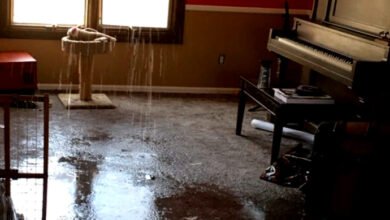The Evolution of Automated Cleaning: How Modern Technology Transforms Home Maintenance

Robot vacuums have revolutionized home cleaning by combining advanced sensors and intelligent software. These devices navigate floors autonomously, adapting to obstacles and varying surfaces. Early models relied on random patterns, but modern versions use lidar and cameras for precise mapping.
Efficiency is a key advantage. Many models return to charging docks automatically when low on battery, resuming cleaning afterward. Scheduling features allow users to set cleaning times via apps, ensuring consistent upkeep. This hands-off approach makes them ideal for busy households or those with mobility challenges.
Key Features to Consider
Navigation and Mapping
Advanced navigation systems enable robots to clean methodically. Lidar-based models create detailed maps, avoiding furniture and stairs. Cameras enhance obstacle detection, identifying cords, shoes, and pet waste. Some units even recognize room types, prioritizing high-traffic areas.
Mapping technology also supports zone-specific cleaning. Users can designate no-go areas or focus on specific rooms. This precision reduces missed spots and ensures thorough coverage, especially in cluttered spaces.
See also: Maximising Your Property’s Value: Essential Selling Tips for Langley Homeowners
Suction Power and Cleaning Modes
Suction strength varies widely, with high-end models offering up to 10,000 pascals (Pa). This is critical for deep carpet cleaning and pet hair removal. Adjustable modes let users switch between quiet operation and maximum power, balancing noise and effectiveness.
Multi-surface brushes enhance versatility. Rubber rollers prevent hair tangles, while side brushes sweep debris into the vacuum’s path. Some devices automatically increase suction on carpets, ensuring consistent performance across floors.
Self-Emptying and Maintenance
Self-emptying bases are a game-changer. These docks store debris in disposable bags, reducing frequent bin emptying. Units with larger dustbins or bagless systems minimize allergen exposure, ideal for allergy sufferers.
Maintenance remains simple. Filters and brushes require periodic cleaning or replacement. Apps often send reminders, streamlining upkeep. High-end models even wash their mop pads, further reducing manual intervention.
Hybrid Models: Vacuuming and Mopping Combined
Hybrid devices tackle both dust and stains, using separate compartments for dry and wet cleaning. Retractable mop pads lift on carpets, preventing moisture damage. Others employ vibrating or spinning pads for scrubbing hard floors.
Water tanks vary in capacity, with some models refilling automatically via docks. However, mopping effectiveness depends on pad pressure and cleaning solution compatibility. While hybrids simplify maintenance, they may not replace deep manual mopping for tough stains.
Choosing the Right Model for Your Home
For Pet Owners
Homes with pets benefit from strong suction and anti-tangle brushes. Obstacle avoidance is crucial to steer clear of toys and accidents. Self-emptying bases reduce fur buildup, while HEPA filters trap allergens.
Look for models with dedicated pet modes. These often include intensified suction and frequent bin emptying. Some devices even avoid pet bowls, ensuring uninterrupted cleaning sessions.
For Large Homes
Extended battery life (90+ minutes) and multi-floor mapping are essential. Units with large dustbins or self-emptying docks handle expansive areas without frequent pauses. Lidar navigation ensures efficient coverage, minimizing redundant paths.
Dual-purpose models save time by vacuuming and mopping simultaneously. Ensure the device can store multiple maps if your home has stairs or split levels.
For Budget-Conscious Buyers
Entry-level models offer basic navigation and adequate suction for small spaces. While lacking self-emptying features, they excel on hard floors and low-pile rugs. App connectivity and scheduling are common even in budget options.
Consider refurbished units for advanced features at lower costs. Brands often certify pre-owned models, offering warranties comparable to new devices.
Maintenance Tips for Longevity
Regular upkeep extends a robot vacuum’s lifespan. Clean sensors weekly to prevent navigation errors. Empty dustbins after each use and wash filters monthly. Check brushes for hair buildup, especially in households with pets.
Update software periodically to access new features and bug fixes. Store the device on its dock to maintain battery health. Avoid using on wet surfaces unless designed for mopping.
The Future of Automated Cleaning
Innovations like AI-driven obstacle detection and room recognition are becoming standard. Future models may integrate air purification or UV sterilization, enhancing home health. Battery advancements could enable continuous operation, even in large homes.
For those seeking cutting-edge solutions, explore the latest in robot vacuum technology. These devices exemplify how automation continues to redefine household chores, blending efficiency with smart design.
Final Considerations
Assess your home’s layout, floor types, and specific needs before purchasing. While no robot vacuum is perfect, the right model significantly reduces manual labor. Prioritize features that align with your lifestyle, whether it’s pet-friendly designs or hands-free maintenance.
Investing in a quality device ensures cleaner floors and more free time. As technology evolves, these tools will only become more integral to modern living, offering tailored solutions for every household.







